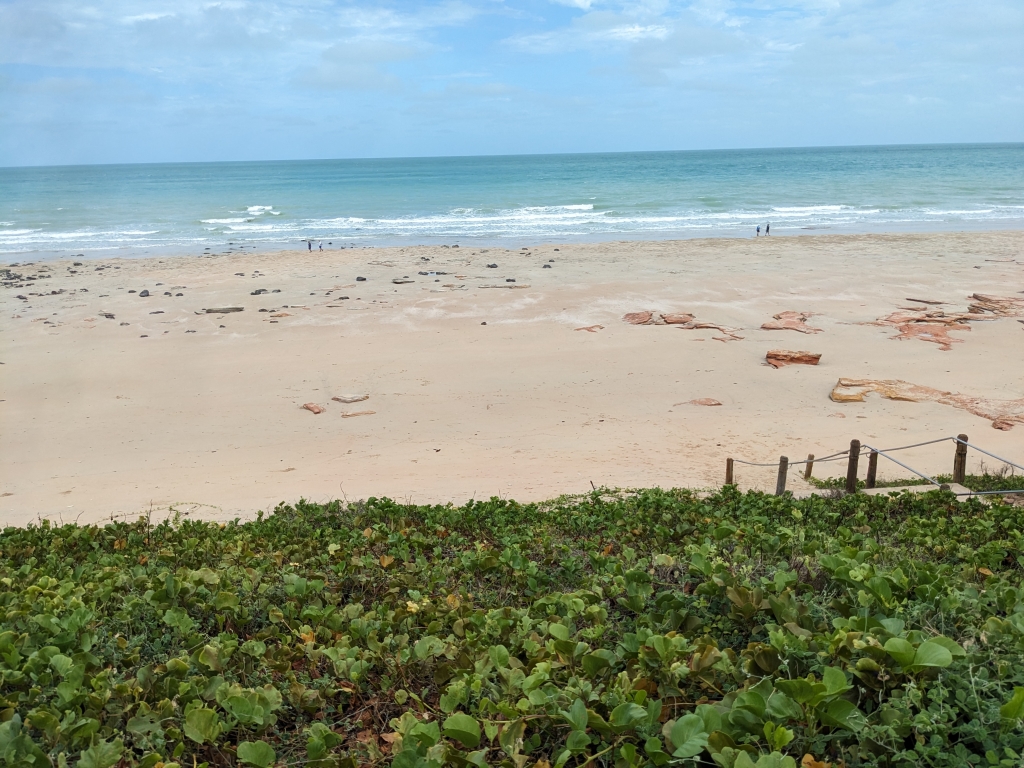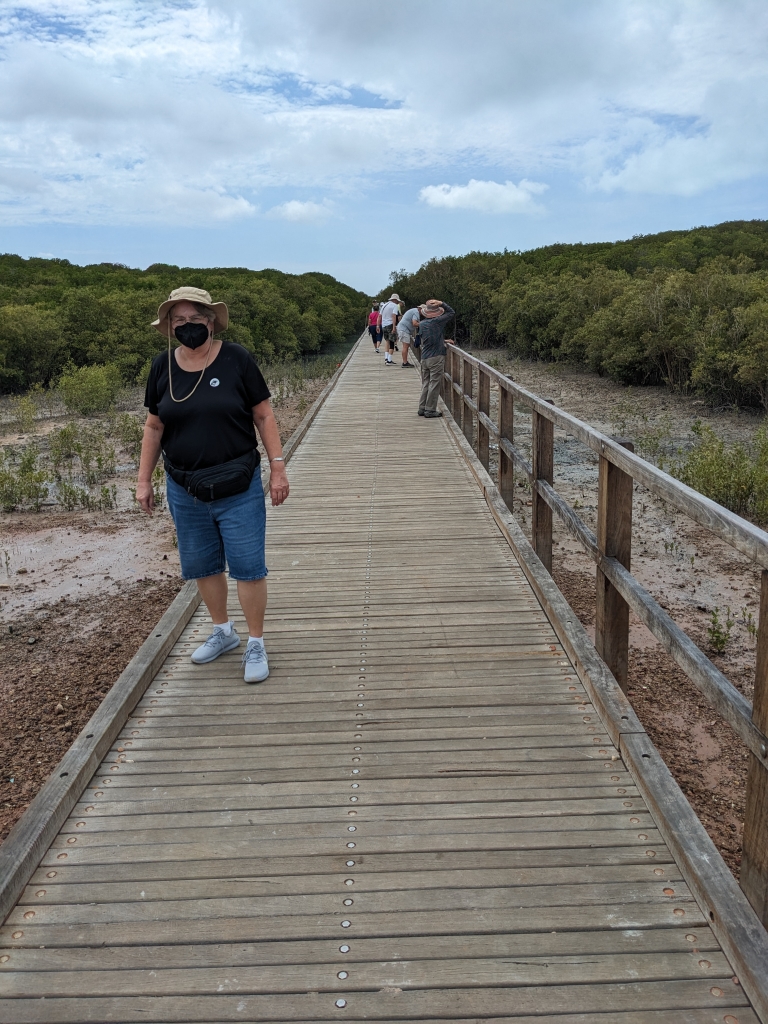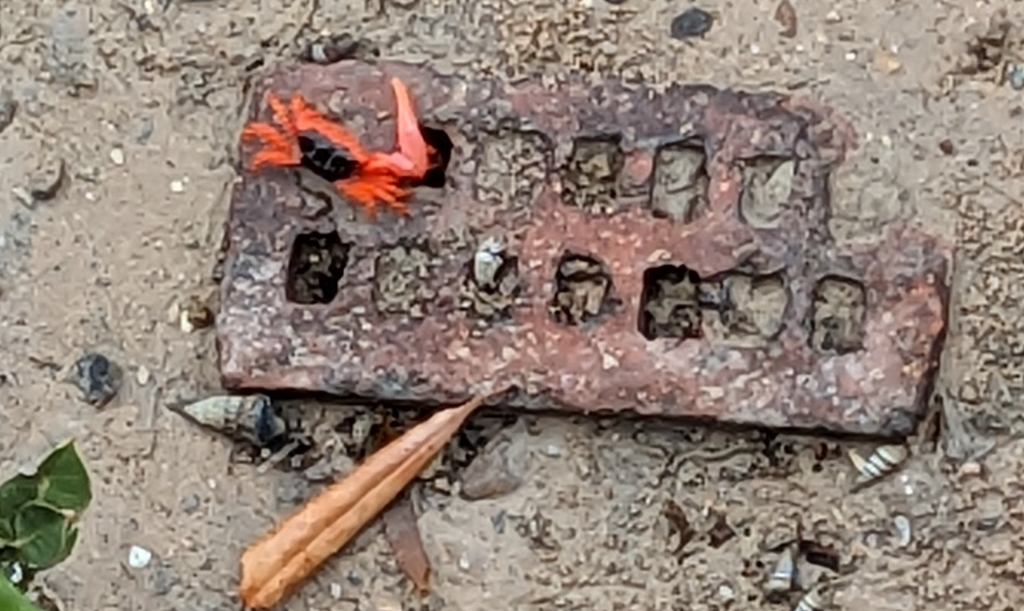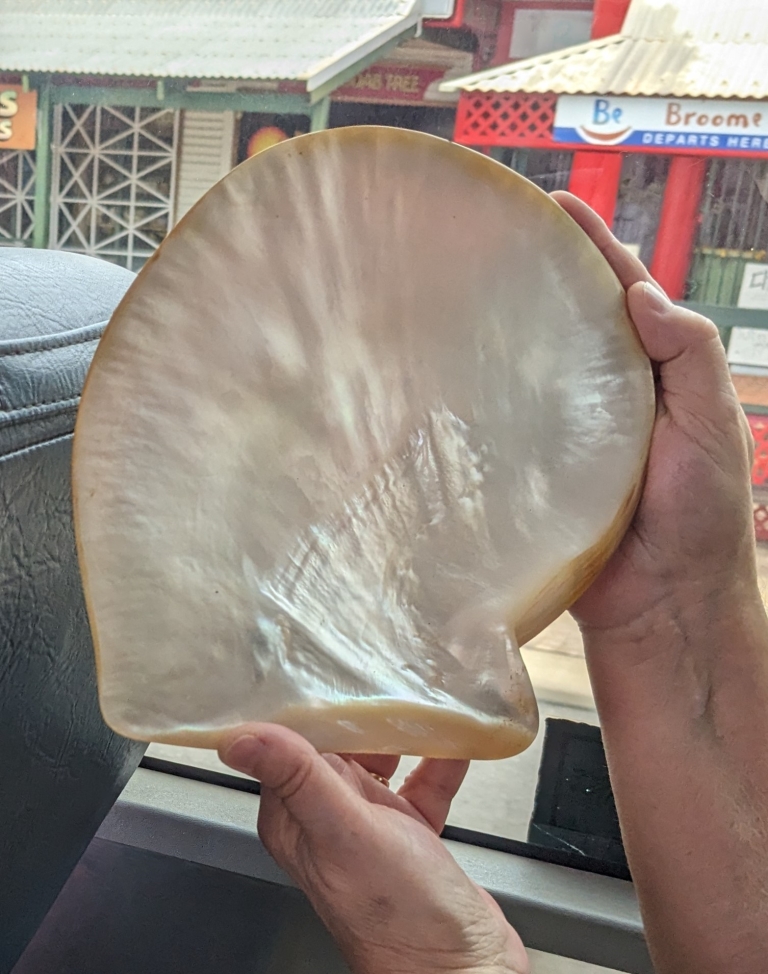When I type up these blogs, I sometimes make mistakes. For example, Brittan sent the HMS Pandora to find the Bounty mutineers, not the USS Bounty. I don’t correct these mistakes because it just doesn’t matter all that much. But I will acknowledge and correct an error in my previous blog. I am told that the snorkels on the SUVs are very useful in this area. The difference between high tide in the rainy season and low tide when it’s dry is enormous. Locals who want to go to the back country when the water level is up sometimes drive through areas so deep that their headlights are under water. I didn’t see any mud on the trucks because the rains haven’t started and everything is still dry. I yield my opinion to the local source.
Broome is a very small town. Back in the day, pearl shells were big business. There was a lot of them, but they were all at the bottom of the bay. Men called luggers came from Japan, Indonesia, and other areas to work as luggers. Many of the men decided to settle down and marry an indigenous woman. The result is there is a substantial population of mixed heritage people.
The first stop on our tour was Cable Beach. It got its name from the undersea cable that started at this beach and ran out to somewhere in Indonesia. There are two interesting points to this picture, which you can’t see no matter how closely you look, so I’ll have to go the thousand word route. The area is filled with dinosaur tracks from 350 million years ago. You might think they should be large and easy to see. They are large, but they are only visible during low tide. The tracks are towards the left side of the picture, under the water. The second thing you can’t see is that in spite of the nice weather, there is only one person swimming in the cove. Locals know that poisonous jelly fish float in this time of year, and crocs are more active due to it being mating season. There are two warning signs posted about croc sightings. Only one person wants to ignore the warning.

Streeter’s pier was built to make it easier to transport pearl shells. That activity no longer exists, but the locals keep the pier in good repair for recreational uses. If you look closely, you can’t tell the pier is at least 20 feet above the mud below. The tide was coming in when we were there. By the time we left, the pier was just above the water.

Since the water level was still low when we were at the pier, we could see fiddler crabs in the mud below. They are quite small, but that doesn’t keep the males from being delighted with the size of their one large claw. They love waving it around to threaten other males and attract females. This time, you don’t have to look very closely to see an orange fiddler crab strutting himself.

Our last interesting pic is of a pearl shell. Our guide said it would yield 60 t0 70 buttons. Believe it or not, this was the primary use for pearl shells all the way up through the late 50s, when synthetic materials took over.

That’s it for this port. Tomorrow is a sea day. Our next stop is even smaller than Broome.
I hope this finds everybody doing well.
